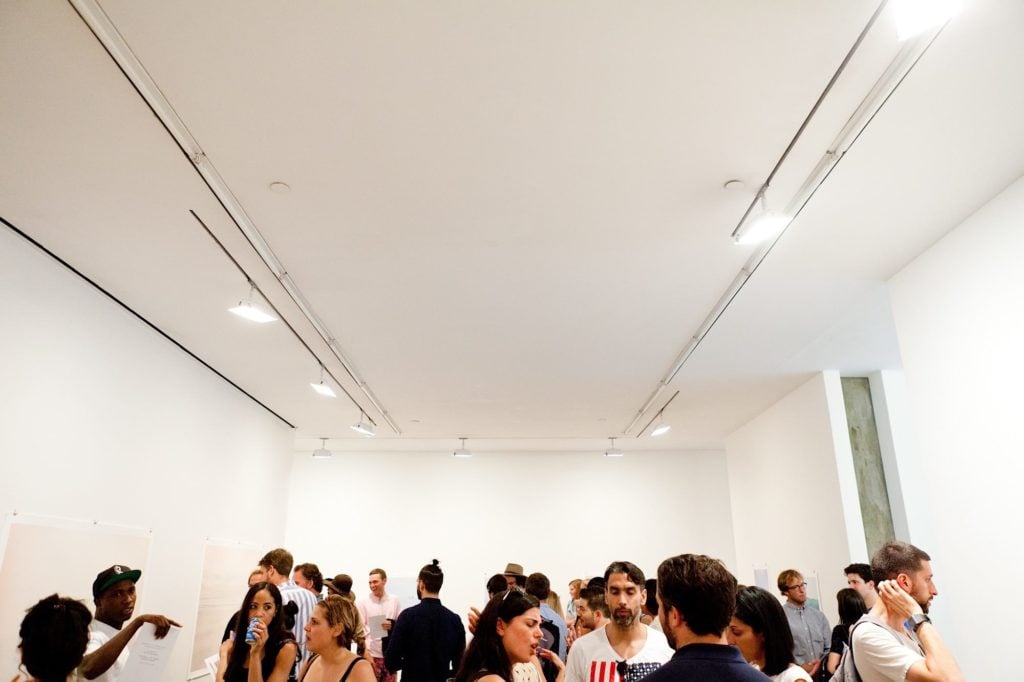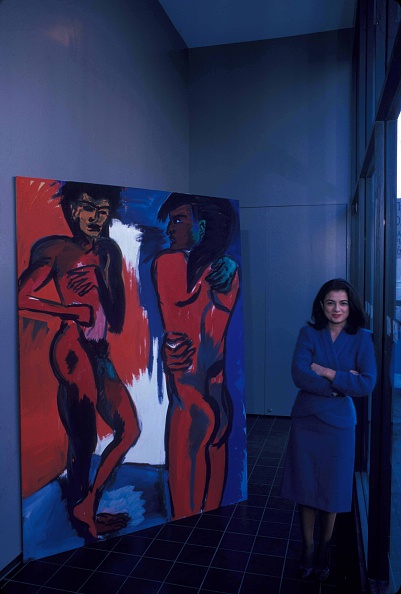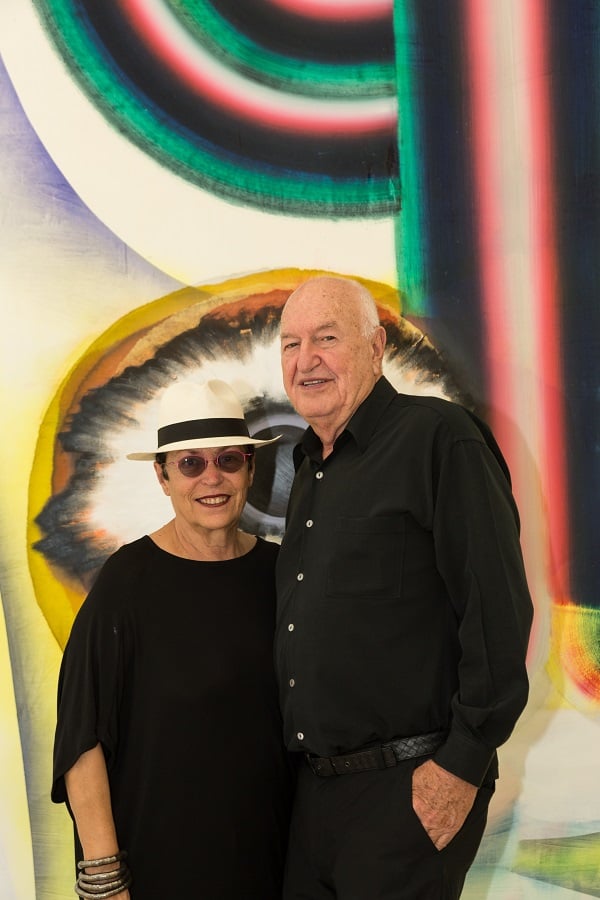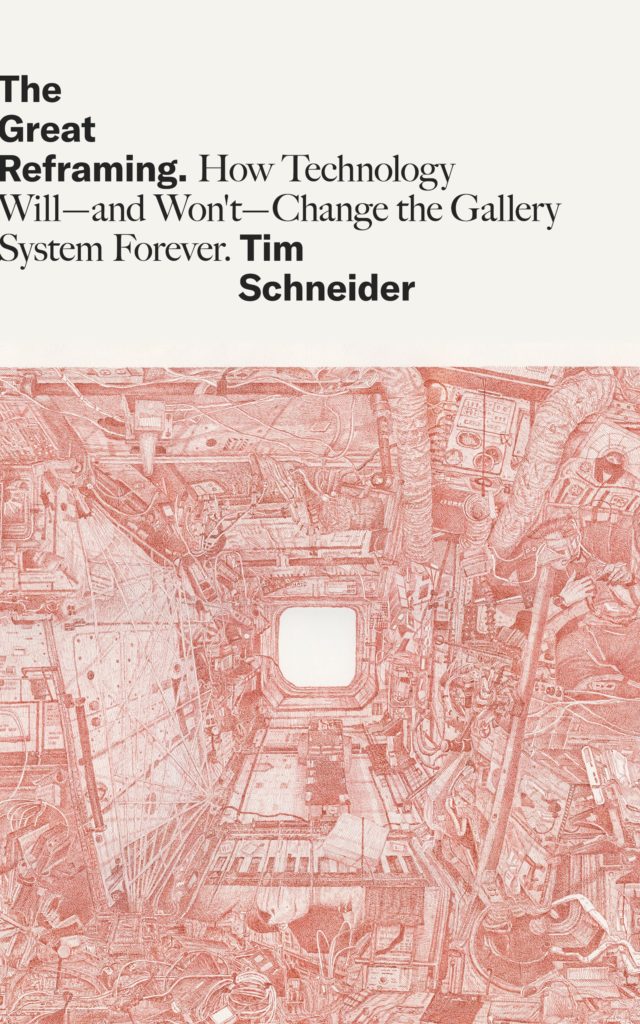Analysis
The Dealer Will See You Now: Why Gallery Waiting Lists Are the Ultimate Art-Market Paradox
In an excerpt from his new book, our columnist explores the seemingly illogical economics of the gallery waiting list.

In an excerpt from his new book, our columnist explores the seemingly illogical economics of the gallery waiting list.

by
Tim Schneider

At the market’s summit, collecting art is about much more than cultural patronage or appreciation. It’s even about more than investment in what has recently become recognized (somewhat misleadingly, I think) as a potentially lucrative alternative asset. Above all, collecting has become a VIP pass to an ultra-exclusive worldwide social circuit—one where admission is increasingly restricted to the world’s wealthiest and most powerful people.
For shorthand, I’ll call this small but mighty population of market-makers and market-movers Camelot: a kingdom so wealthy, self-contained, and sublime that the rest of the world can only relate to it as a kind of aspirational fiction. And the societal norms of Camelot play a vital role in explaining the challenges facing any would-be technological revolution in the gallery sector.
The key point about Camelot is that top art-industry players generally dedicate themselves to preserving its exclusivity with fire and blood. Access itself is a commodity. And perhaps nothing in the gallery sector better embodies Camelot’s extra-financial selectivity than the waiting lists for works by certain sought-after contemporary artists.
Although she may or may not be the mechanism’s inventor, high-end New York gallerist Mary Boone is widely credited as the first to usher the waiting list into standard gallery practice during the 1980s art-market boom. The concept seems straightforward: When demand for an artist’s work outstrips supply, interested collectors place their names on a list kept by the gallerist. As the artist completes new works, the gallerist theoretically works down from the top of the list, offering each freshly produced piece to the next pre-registered client.

Mary Boone at her gallery on West Broadway on January 1, 1981 in Soho, New York City. (Photo by Waring Abbott/Getty Images)
However, the reality is that waiting lists are often not as democratic as they sound. While different gallerists use different rules to facilitate their respective lists, the core principle is usually the same: a collector’s status in Camelot matters at least as much, if not more, than his net worth. As Christopher Mason nicely summed up in a 2015 New York magazine feature, only a select few, such as advertising mogul Charles Saatchi, can jump to the top of a list.
Joining him there, Mason wrote, is “anyone with a well-regarded private (but open to the public) museum, like Eli Broad in California, or the Rubell family, whose recently expanded space is in a former drug-seizure warehouse in Miami, or Marieluise Hessel, who is building an impressive contemporary collection for Bard College. They’re followed by those who’ve built private collections… ‘If a collector with a fine reputation—say, Si Newhouse—is interested,’ says [high-end gallerist Marianne] Boesky, ‘then I’ll have to prioritize that client over a wonderful person who might have been waiting longer. And that causes tremendous angst.’”
Now, waiting lists only govern a fraction of contemporary art sales made at or near the industry’s peak. But their endurance reflects that Camelot’s gatekeepers, particularly in the gallery sector, often lock out both fairness and efficiency in order to preserve exclusivity. Just as importantly, they do it for two defensible business reasons, both based on the creation and maintenance of value in the primary market.
First, the waiting list simultaneously guarantees sales and boosts an artist’s prices. Its pure existence signals to interested collectors that someone else is already poised hungrily in the shadows, ready to pounce on any piece they might pass up. Nothing fans the flames of desire like the aphrodisiac of competition.
This quirk of human nature minimizes the odds that any collector on the list will decline the opportunity to buy once it is granted. Furthermore, the waiting list also automatically justifies any asking price the gallerist chooses by implying that a standing offer already exists at that price. As a result, collectors on the list essentially forfeit all bargaining power to the gallerist.

Mera and Don Rubell in front of a painting by Kerstin Brätsch. They are among the few collectors who can rocket to the top of a gallery waiting list. Photo: © Chi Lam.
But the second reason for the waiting list actually extends to almost all high-end gallery sales: Camelot is a self-reinforcing system of value. Selling an artist’s work is important to elevating his—and sadly, it’s still usually “his”—standing in the market, but not as important as selling it to “the right collectors,” meaning those already held in high regard within this socioeconomic niche.
As Mason wrote in New York, “In gallery parlance, a work of art is not so much sold as ‘placed’ in a museum or collection that is likely to enhance the career of the artist. For dealers, it’s a way of controlling what happens to art after they’ve parted with it—hence, of manipulating its value.”
Placement is the most potent reason that the primary market remains what economists call a matching market—one in which buyer and seller must select each other in order for a transaction to take place. (The dating market and the job market are two classic examples of the concept. I can’t unilaterally decide to date Rihanna even if she’s single, and I can’t unilaterally decide to start writing for The New Yorker even if they created an opening for an art-market specialist on staff. In both cases, the other party has to agree to accept my offer.)
Plotting an artist’s rise, as well as maintaining a lofty cruising altitude, demands that a gallerist strategically parcel out works to meaningful buyers at choice times. What the buyer wants is irrelevant, if the gallerist does not want the same. And “placing artwork” is not simply a matter of evenly distributing an artist’s output between, say, influential private collectors and prestigious public museums.
The most successful gallerists constantly manage a complex web of interconnected relationships within the industry: creating buzz, granting favors, sparking envy, and more—usually all for the sake of what’s best for the gallerist’s overall business, not necessarily the individual artist’s finances.
The key takeaway: We’re left with a market where a gallerist might rather sell a piece to the Solomon R. Guggenheim Museum for $75,000 than to an unknown entrepreneur for $200,000. The decision looks nonsensical from a short-term financial standpoint, but in the context of Camelot’s value system, it makes perfect sense in the long run.
But the gallery sector’s matching-market principles don’t just divide insiders from outsiders when it comes to actual sales. High-end gallerists also tend to be nearly as selective when distributing information. Even volunteering rudimentary facts to the general public—for example, whether or not an exhibited work is still available—can drag the artwork outside the walls of Camelot onto common ground, plunging the gallery into the muck of everyday commerce, universal access, and relatability.
None of these is good for business. Many, if not most, gallerists therefore avoid the mess by judiciously withholding any scrap of intelligence that could qualify as even remotely sensitive. The result? Insiders feel even more special, outsiders feel even less worthy, and art shines on from atop its gilt pedestal.
Musician, tech investor, and then-recent art-market initiate D.A. Wallach crystallized both sides of this phenomenon in a widely circulated March 2014 blog post titled “Why the Elitist Fine Art World Should Lose Power.” In it, he described gallerists along his maiden voyage to Los Angeles’s South La Cienega Boulevard as “a bunch of arrogant jerks” who barely dignified his occasional questions with “condescending, empty replies.” Overall, the glacial chill transformed an excursion “that should [have been] fun, magical, and for everyone” into one that felt “deflated, alienating, and classist.”
Yet ironically—and tellingly—Wallach also noted that his consistently cold reception in these “condescending” galleries made the lone gallerist who enthusiastically engaged him seem “desperate to push his artists” and “amateur.” The exception proved the rule. By wielding opacity, high-end gallerists keep Camelot extraordinarily expensive, extraordinarily exclusive—and extraordinarily frustrating to technologists in particular.

Schneider’s book. Cover image: Tim Schneider.
This is the first of two excerpts from our art-market columnist Tim Schneider’s new book, The Great Reframing, which delves into the primary art market’s fraught relationship with technology. The next excerpt will appear on the site next Thursday. The full book will be available for download on Kindle on Monday, June 26.